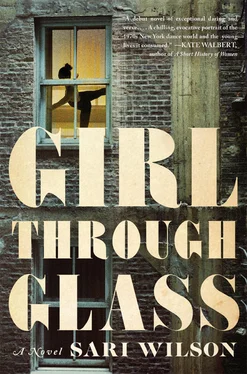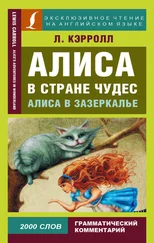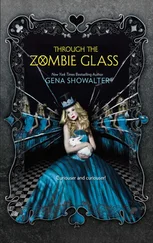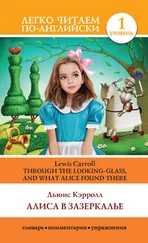His eyes widen. He opens his mouth, closes it. “Okay, okay. I’ll be seeing you.”
“Bill—”
He turns.
“I didn’t mean—”
“I know,” he says. He looks tired, but I can see some damage has been done.
At home that evening, I put on a bathrobe, light a cigarette, and give in to my rage. Did Bill lie to me? Did he apply earlier? If so, he wouldn’t be the first to keep a secret. It would only be karmic. The fact is, though, if the Pell doesn’t come through I’m pretty much screwed. The only other thing I have out there is Alquinon, a third-rate university on the bleak border of Canada. I put in an application for a dance professor position (mostly technique, though) because it seemed a “safety school.” But already a few other universities have passed on me.
I take a deep drag on my illicit smoke-stick saved for emergencies of this sort. I pick up a glass paperweight with a red flower embedded in it, a gift from my mentor in grad school, a woman who was part of the 1960s new wave of dancers and movement artists, and who passed away last fall. I run my hand gently over the smooth glass, then I pick it up and hurl it across the room. It hits the wall and shatters. A shiver runs down my spine.
After I clean up the shards of glass, I wander into my office and take a copy of my dissertation book— Corporeality Subverted: The (Dis)embodied Feminine in the Aesthetic of George Balanchine, 1958–1982— the minimalist gray and black cover, and hold it in my hands, looking out my back window toward campus. The sunset is starting up like some tired toy that keeps playing the same old tune. It is disturbingly bright — the clouds have opened a stream of luminous pink-yellow light the color of a scab on a baby’s knee. The light has the brilliance of something having been saved up and now squandered all at once. Then the moment shifts: some tipping point of night has passed and I can only see myself, reflected in my window, surrounded by my office things, my big bright hair gleaming in all its hurrahs.
It’s been two weeks since her father left. Classes at The Little Kirov have started again. In the girls’ dressing room, Mira and her friends change. Mira loves this moment of transformation, when she gets to shed her jeans and emerges in her pink tights and black leotard — her second skin. Since her dad left, she has begun to wear her tights and leotards under her school clothes so she can skip the awkward moment of nakedness between her two selves.
She has been working hard, harder than she ever has before. This work — she had not known what it was to work before — comes as a relief. She clings to it, to the feeling of twisting her mind around a combination, the quivering in her legs when she stretches her dégagés until her toes cramp.
Val jumps up on a bench and begins singing the most recent hit song on the radio. Delia climbs up next to her, and Delia and Val sing together. Then Meaghan joins in. Standing on the bench behind her, they all sing together — the words are something about dreams, morning, kissing, and crying.
Mira can hear the song’s orchestral crescendo in her head, but something stops her from joining in. She is too aware of the older girls — of Hannah turning toward them, of being caught in that smirking gaze.
The older girls are gathered in a pack over on the other side of the dressing room. They are half in their ballet outfits, and half still in their school clothes. You can still see their separateness, how in the outside world they would never speak to each other. Robin, a Level 5 girl, pulls on leg warmers and picks her way between open soda cans and unwound Ace bandages, toward the dressing room door. She has a little heart-shaped face and limpid eyes that blink a lot when she comes in from outside, and no matter what the weather, her skin is always white with the opaqueness of alabaster. She goes to a performing arts school and arrives with her hair already tightly wrapped in a bun, her tights visible beneath short denim shorts, the straps of her leotard poking out of a scoop-neck sweatshirt. With her far-off, liquid gaze, Robin focuses on a horizon visible only to her. Mira wants to see what Robin sees. They all do.
Hannah, another Level 5 girl, is changing too. Over her tights, she still wears a white oxford with a Catholic school emblem on the breast pocket. Her half-undone pointe shoe ribbons have edges dark with grime. (She has taken to walking around with them undone.)
Last spring, excitement over Hannah’s discovery, her possible rise, spread through the hallways of the Kirov. Hannah had performed the Flower Princess in the Kirov’s annual production of The Wounded Prince and a reviewer from the Times singled her out. He praised her for “a rare musicality” and “an extension that made her limbs appear to fly on their own.” Mira had spent the rest of the spring huddled in the doorway of the older girls’ class, dissecting Hannah’s turnout, her arch, her anatomy, searching for clues, for understanding.
Then, in the spring, Hannah got to the final rounds of SAB auditions. Fewer than fifteen blocks north of Little Kirov is the newly renovated SAB, or School of American Ballet, boasting warehouse-size classrooms with industrial flooring and diffuse light. Here the mothers spend their time with their noses pressed to windows to catch glimpses of New York City Ballet dancers. A few blocks south of SAB is ABT, the American Ballet Theater’s school, which fills an entire crumbling brick building with dark, sweaty, mysterious warrens of classrooms and rehearsal spaces.
SAB and ABT signify the community of the chosen. Getting into one of these schools means a shot at getting into one of these companies. All the other studios throughout the city, including The Little Kirov, are feeding ponds for SAB and ABT. Essentially, you go on to one of these two schools — or you go nowhere.
The long, hot summer has ended, classes have started up again, and Hannah remains at the Kirov, in the Level 5 class, with the other fourteen- and fifteen-year-olds. Hannah has missed her chance. Mothers whisper about “problems with her architecture.” Was it her spine — or was it her hips? Or her feet?
Mira notices that Hannah no longer bothers to put her hair up in a bun for class but lets it swing loose in a ponytail. She has rounder thighs and now wears a bra that makes a lumpy shape in her leotard. As she comes down the hall, her ponytail swinging, all fresh air and unabashed anger, Mira avoids her “what’s it to you?” stare. Mira pushes herself up against the wall and looks at her feet; she gets out of Hannah’s way.
Too late. Hannah’s gaze rests on her. Mira feels a wash of cold flood through her, which leaves her fingertips hurting. Behind her, Val and the others are still singing.
“You’re good, right?” Now a smile is playing at both sides of Hannah’s face.
Mira nods. She is good. That promise she has made to herself at the start of this year has bloomed into some beating, driving bird that pumps its strong, tiny wings in her chest during class. The harder she works, the higher the bird tries to fly.
“Leave her alone,” Robin says.
“Oh yeah?” says Hannah.
“Yeah. Leave her alone.”
Hannah laughs. “Or else?”
“Girls!” Laura’s mother stands in the doorway with her hands on her hips. “Please!” Mira looks at Val and then down, fighting a smile. Laura’s mother is the kind of ballet mother Mira and Val make fun of, the kind who goes up to the barre after recitals and tries to do some of the ballet moves herself, the kind who stands in the doorway and yells “We need a new nutritionist for Laura!” Laura stands with her back to the wall, looking at her mother in dismay. Mira catches sight of Laura’s prissy pink vinyl-shiny ballet shoes. Anger cleaves at her — who is this girl, who are any of them, to flout the sartorial rules of this world that can turn children into princesses and princes?
Читать дальше











